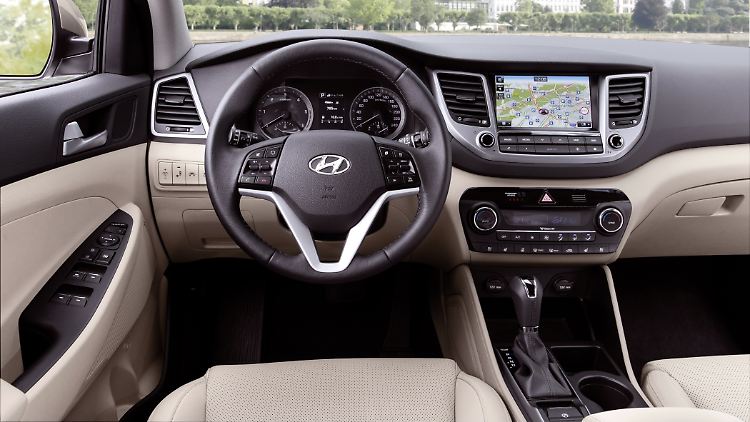Used car check
Hyundai Tucson has it with the brakes
Hyundai's compact SUV is called Tucson (city in Arizona) and this name is intended to arouse the desire for adventure in the driver. The name change to ix35 (second generation, 2009 to 2015) that was carried out in the meantime remained an interlude. The third generation was retired in 2020 and is now in the best used car age. The TÜV knows whether buying a second-hand Tucson will be an adventure or rather a pleasure.
Quality


Even today, the third generation of the Hyundai Tucson still looks modern.
(Photo: Hyundai)
During the TÜV main inspections, the inspectors very often criticize the function of the foot brake. Oil loss is a problem in new models. As the vehicle gets older, complaints about the axle suspension and steering become more frequent. Overall, however, its defect rate (“no defects”) is at the average level of all vehicles examined.
Body and interior
Visually, the 4.48 meter long Tucson stands out with its clear lines and harmonious proportions. Compared to its predecessor, the SUV scores points with a higher quality interior. The workmanship is good, as is the space available. The trunk volume is 513 liters; if you fold down the rear seat backrests, it is 1500 liters.


The workmanship and space in the Hyundai Tucson are good.
(Photo: Hyundai)
A facelift in 2018 brought small changes to the front and rear, and LED headlights were now optional. In 2019, Hyundai added the N-Line version to the range, which was trimmed for sportiness with 19-inch wheels, dark decorative applications and a double exhaust tailpipe.
Engines and drive
At market launch, a 1.6-liter turbo gasoline engine with 97 kW/132 hp and 130 kW/177 hp was available. The more powerful version was also available with all-wheel drive. Fuel consumption is on average between 6.3 and 7.8 liters. Power is transmitted via a manual six-speed gearbox, with an optional seven-speed dual-clutch gearbox (DSG) ensuring the correct gear selection.


The N Line equipment offers sporty accents.
(Photo: Hyundai)
Hyundai also had three diesel engines on offer, a 1.7-liter with 85 kW/116 hp and 104 kW/140 hp, and a two-liter with 100 kW/136 hp and 136 kW/185 hp. The 185 hp version had all-wheel drive as standard and first-time buyers could order a six-speed automatic instead of the manual transmission. Standard fuel consumption was between 4.6 and 6.5 liters. Since the facelift, a 1.6-liter diesel with almost identical performance data replaced the 1.7.
Equipment and safety


The four-and-a-half-meter-long five-door car offers good space in the rear.
(Photo: Hyundai)
If you want a little more comfort, ignore the basic versions (Classic) and look for the equipment lines called Trend, Style and Premium. “Trend” offered automatic climate control, heated seats and a heated steering wheel, among other things. “Style” included a rear view camera, radio navigation system and traffic sign recognition, while “Premium” had LED lights, 19-inch wheels and a parking assistant.
First-time owners could optionally order an assistance package with automatic braking assistant, blind spot warning and cross traffic warning, among other things. A radar-based cruise control, 360-degree surroundings monitoring camera and fatigue warning were also available with the facelift.
Conclusion


The trunk has a capacity of 513 litres; if you fold down the rear seat backs, it has a capacity of 1500.
(Photo: Hyundai)
The Hyundai Tucson not only looks like an SUV, it is also available with all-wheel drive. The space and comfort offered are decent. A detailed check before buying to check for weak points is advisable.
There are currently around 2,000 used third-generation Tucson models available for sale at mobile.de. Prices start at around 10,000 euros.
































